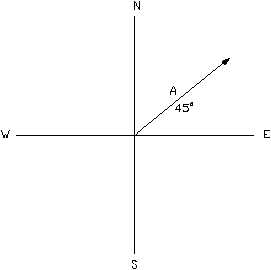Vectors
SCALAR AND VECTOR QUANTITIES
Scalars are quantities that have magnitude only; they are independent of direction.
Vectors have both magnitude and direction. The length of a vector represents
magnitude. The arrow shows direction.
EO 1.1
DEFINE the following as they relate to vectors:
a.
Scalar quantity
b.
Vector quantity
Scalar Quantities
Most of the physical quantities encountered in physics are either scalar or vector quantities.
A
scalar quantity is defined as a quantity that has magnitude only. Typical exa-
mples of scalar quantities are time, speed, temperature, and volume. A scalar
quantity or parameter has no directional component, only magnitude. For
example, the units for time (minutes, days, hours, etc.) represent an amount
of time only and tell nothing of direction. Additional examples of scalar quantities
are density, mass, and energy.
Vector Quantities A vector quantity is defined as a quantity that has both
magnitude and direction. To work with vector quantities, one must know the method
for representing these quantities.
Magnitude, or "size" of a vector, is also
referred to as the vector's "displacement." It
can be thought of as the scalar
portion of the vector and is represented by the length of thevector. By definition,
a vector has both magnitude and direction. Direction indicates how the vector
is oriented relative to some
reference axis, as shown in Figure 1.
Using north/south and east/west reference
axes, vector "A" is oriented in the NE
quadrant with a direction of 45 north of the
o
EW axis. G iving direction to scalar "A"
makes it a vector. The length of "A" is
representative
of
its
magnitude
or
displacement.
 |
| Figure 1 |



0 komentar:
Posting Komentar